Every RV owner should know the significance of tire pressure and how to monitor tire pressure in order to decrease the chances of tire blowouts and other problems that may arise. We looked into the factors that go into determining the tire pressure of an RV, and we made a comprehensive guide to shed some light on the topic.
The tire pressure on an average 16" RV tire can be anything between 35-80 PSI or 280-550 kPa. That's a wide range - and you need to find the right number for your specific weight and number of wheels. Manufacturers provide data-plates in all RVs that include the recommended maximum tire pressure, based on the maximum weight of the RV. Therefore, if you load your RV lightly, then your tires may be overinflated.
There are other factors that go into determining the correct tire pressure for the tires on your RV, but you should be alright if you base your decision on the manufacturer's recommendation and make sure that your RV is not loaded too lightly. If it is loaded lightly, then make the needed adjustments so that you do not damage your tires.
Before you continue reading, let us say we hope you find the links here useful. If you purchase something through a link on this page, we may get a commission, so thank you!
In this article, we will go more in-depth on the topic of determining the tire pressure for the tires on your RV. We will also go over the basics of tire air pressure, the significance of tire pressure, what happens if your tires are under or over-inflated, where to find tire specifications, and how to monitor your tire pressure.
PSI, or pounds (of force) per square inch, is the unit of pressure chosen by most people in the US to represent tire air pressure. You may also see kPa mentioned here and there - that's kilopascal, a unit that represents the same measurement but on a different scale.
Maintaining the proper tire air pressure is a matter of safety for you, the passengers you may have, and the vehicles that may be around you.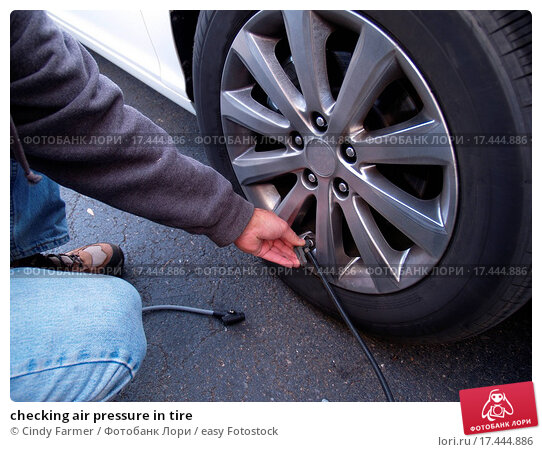
Driving your motorhome or towing your travel trailer or 5th wheel with the wrong level of tire pressure can lead to all sorts of problems, affecting your stability, ease of ride and even gas mileage.
The over-inflation of tires makes the sidewalls and tread of the tire harder than normal. This can limit the performance and traction of the tire. Also, it may cause uneven tire wear.
Also, tire pressure that is too high can cause a slight increase in gas mileage by reducing the rolling resistance of your tires.
Plus, overinflation will lead to a harsh ride, wobbly handling in the wind, and reduced braking effectiveness that is especially reduced on wet roads. If you're towing a travel trailer, it could also lead to sway issues. Read more on how to prevent travel trailer sway in this post.
Most tire blowouts are caused by underinflation.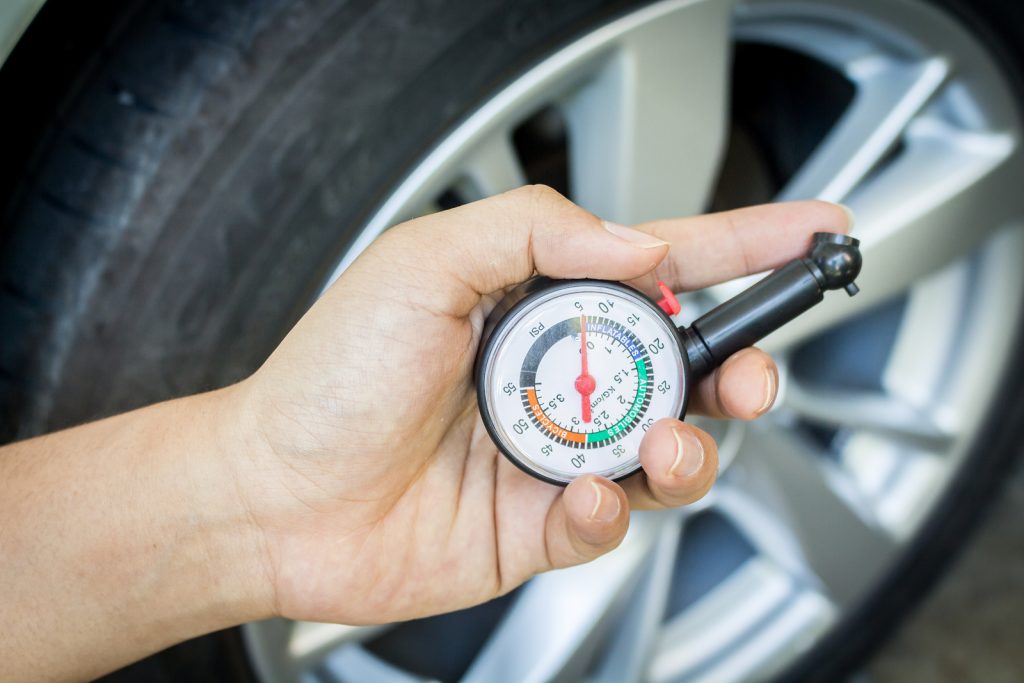 Underinflation will force tires to come into contact with the ground more than properly inflated tires would. Read more on RV tire blowouts (and how to prevent them) in this post.
Underinflation will force tires to come into contact with the ground more than properly inflated tires would. Read more on RV tire blowouts (and how to prevent them) in this post.
To be more specific, the sides, or shoulders, of tires flex more when overinflated which produces an excessive amount of heat, and excessive amounts of heat lead to tire failure.
If your tires are under-inflated by just 10 or 15 psi, then the temperatures on the sides of the tires can reach 200 degrees Fahrenheit.
Is High or Low Tire Pressure More Dangerous?There is a simple answer to this. Low tire pressure is more dangerous than high tire pressure.
Low tire pressure leads to dangerous blowouts while high tire pressure is generally less dangerous. This is true as long as the tire pressure is below the "maximum inflation pressure." If you go over that, you could end up with a blowout as well. Of course, there are other safety issues associated with high tire pressure, such as increased sway when towing.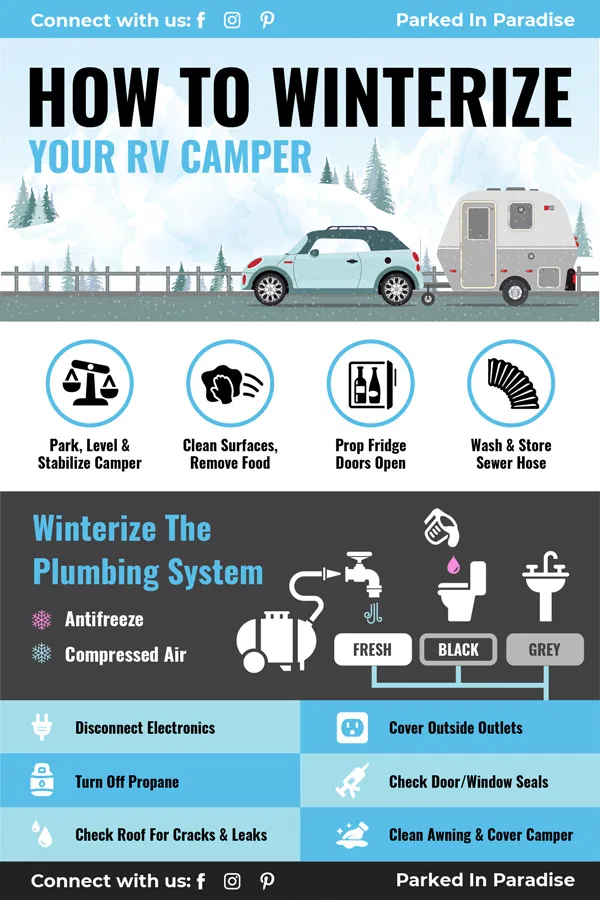
Overall - sticking to your right tire pressure recommendation is always best.
There is almost always more than one place to check your tire's recommended specifications.
WARNING: Keep in mind that the previously stated places will typically only represent the minimum or maximum PSI, and they do not necessarily represent the best possible tire pressure for your vehicle. Read the next paragraph for more information on finding the correct tire pressure for your vehicle.
Setting the correct tire pressure on the tires on your RV is crucial to the tire performance, tire life, vehicle handling, and, most importantly, the safety of you and the people that are around you.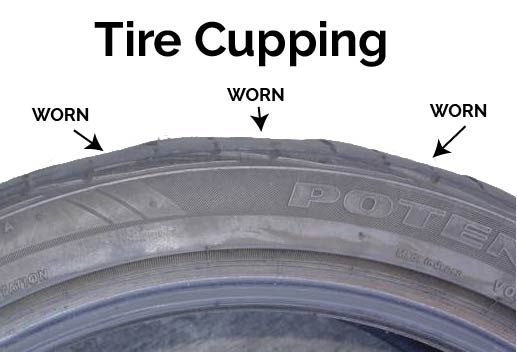
In order to get the best possible tire pressure, you should base your figures on the load being carried by the tires.
When you base the tire pressure on the load being carried by your tires, you ensure that the tires flex properly, are in the correct shape, will not produce an excessive heat build-up, and provide the strength to carry the total weight of your RV without losing tire patch (contact with the road).
Tire manufacturers like Michelin provide detailed tables for load & tire pressure.
The basic rule of manufacturers is to make sure that all tires on the same axle are set to the exact same pressure. This is based on the heaviest side.
Weighing an RV by axle positions and assuming that the load is equal on both sides of an RV is a bad idea. There is no way to calculate tire pressure without knowing the individual wheel weights. You could weigh the full axle, weigh one side, and then subtract from another side to get the weight of the other side.
Keep in mind that it is common for a difference of 1,000 pounds or more to be present between different sides on the exact same axle. Also, dual axles are close together, and they can be treated as a single unit (one wheel).
Get Tire Load Information From the RV DataplateThe next best source of information is the RV dataplate. RV manufacturers are mandated by law to post a recommended tire pressure on the dataplate.
Manufacturers expect the owner to load the unit to its maximum weight. This is why they always post tire pressures based on the maximum weight of the RV.
You probably will load your RV lightly if you use the dataplate as a source. This will eventually lead to overinflated tires. Read the paragraph above to learn about the problems that can arise if you overinflate your tires.
On the flip side, you could load your RV beyond the axle rating (GAWR) or Gross Vehicle Weight Rating (GVWR). In that case, choosing to use the dataplate pressure will lead to under inflation.
Finally, using the dataplate as a source may not be a good idea because it does not take into account the fact that an RV may be loaded in a remarkably unbalanced condition which is quite common.
It is important to understand that the pressure that is shown on the sidewall is not the maximum pressure for the tire. It is the minimum pressure needed to attain the maximum load rating of the tire.
Setting your tires can be set to the pressure indicated on the sidewall will lead to obtaining the design load rating of your tire. Keep in mind that the pressure indicated on the sidewall does not take into account all of the many factors that go into choosing the optimum tire pressure.
Monitor your tire pressure with a tire pressure monitoring system (TPMS). Your RV might have one pre-installed, but if it does not, then simply buy one and install it in your RV.
You could monitor your tire pressure the old fashion way with a tire pressure gauge too.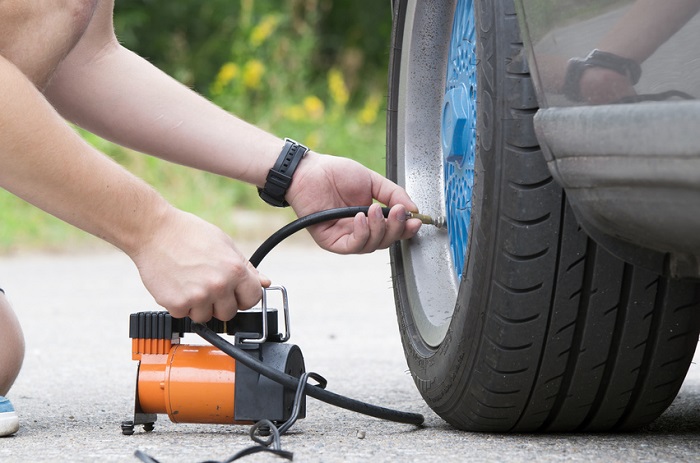 Digital tire pressure gauges are a decent option.
Digital tire pressure gauges are a decent option.
This may seem like common sense, but some people do not realize that tires lose air pressure over time. They lose around 1 pound per square inch (PSI) every thirty days, and they lose around 1 pound per square inch for every 10-degree (Fahrenheit) decrease in temperature.
Remember to monitor your tire's air pressure, or else you may suffer the consequences. You may want to set reminders to check the tire pressure unless you have a tire pressure monitoring system that alerts you when tire pressure is too low or high.
In ConclusionMaintaining the proper PSI, or pounds (of force) per square inch, is very important since it can have an effect on your safety and the safety of those around you.
A tire pressure that is too high and a tire pressure that is too low will lead to tire damage and other issues, but a tire pressure that is too low is worse because it leads to tire blowouts.
You can figure out the specifications and correct tire pressure for your tires in a variety of ways, but the best way to determine the correct tire pressure, in our opinion, is to look at the information that the manufacturers provide in the dataplates that are included in all RVs.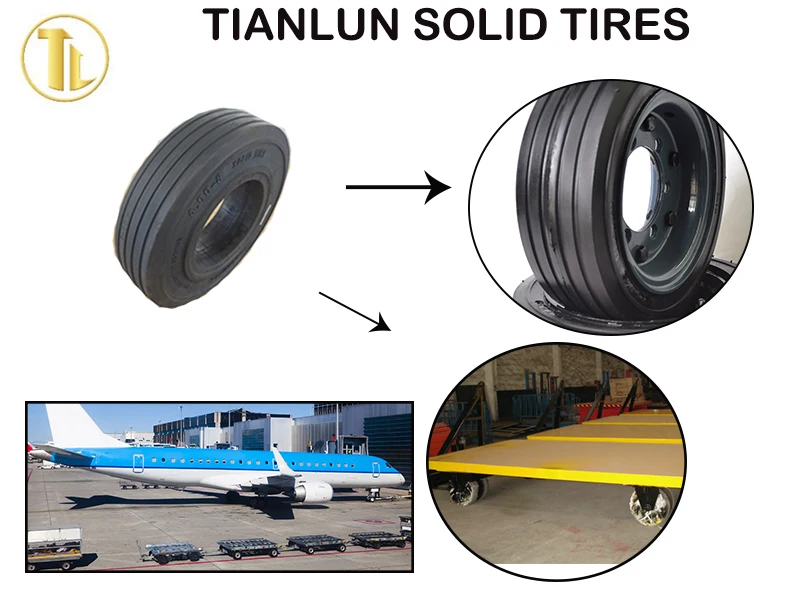
Dataplates include the recommended maximum tire pressure which is based on the maximum weight of the RV. Therefore, if you load your RV lightly, then your tires may be overinflated (if you make your decision based on the manufacturer's recommendation).
Before you go, be sure to check out these guides that pertain to RV safety -
Driving A Motorhome (9 Things You Need To Know Before Getting Behind The Wheel)
Should A Travel Trailer Be Level When Towing?
When Should I Replace My Travel Trailer Tires?
How To Safely Drive An RV On Mountain Roads
Tire pressure is an influential factor for gas mileage, tire wear, and other important travel details. You need the right tire pressure to make sure you are not overworking those tires and ruining them before their actual lifespan is up.
You will get a lot of different opinions on how you should inflate your trailer’s tires. The ideal tire pressure will depend on the size and type of trailer you are towing.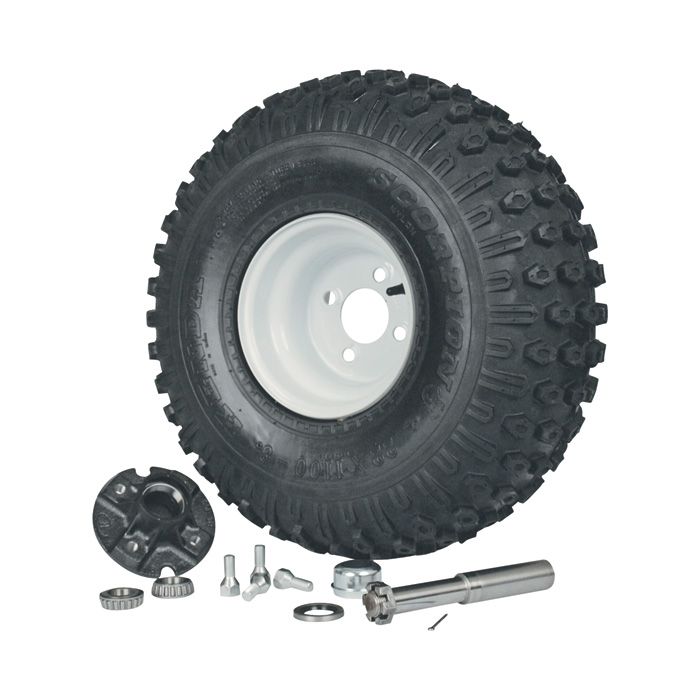 However, that pressure should be within 40 to 65 PSI no matter the trailer brand, size, or model.
However, that pressure should be within 40 to 65 PSI no matter the trailer brand, size, or model.
To learn more about this important topic, just continue to read our article. It has the information you want to know about so you can set your trailer’s tires to the right air pressure level. Take a few minutes to see how this important information can help you out on your next vacation.
Travel Trailers Tire Pressure 101
Should You Fill Travel Trailer Tires To Max Psi?
What Should The Tire Pressure Be on a Travel Trailer?
How To Determine Trailer Tire Pressure
Trailer Tire Pressure Calculator
Travel Trailer Tire Pressure Chart
Trailer Tire Pressure Cold vs Hot
Trailer Tire Pressure Loaded or Unloaded
Double Axle Trailer Tire Pressure
How To Check Trailer Tire Pressure
What Should Boat Trailer Tire Pressure Be?
What Should Tractor-Trailer Tire Pressure Be?
Why are Trailer Tire Pressures So High?
Will Low Tire Pressure Cause Trailer Sway?
There is an ongoing debate about this specific topic. If you read the different RV discussion forums, you will find that there are people on all sides of the issue. Some say you should put the maximum amount of air in your tires while others are saying not to.
If you read the different RV discussion forums, you will find that there are people on all sides of the issue. Some say you should put the maximum amount of air in your tires while others are saying not to.
What compounds the confusion is that the PSI listed on the side of your tires is an average figure. There is no definitive answer for the correct tire pressure for your or any trailer because all trailers are different.
There are some very qualified people who say there is nothing wrong with filling your tires to the maximum level that is listed on the side of your tires. The problem comes in when you are not wary of the different trailer tire types.
They may be the same size but some tires are Load C, others are Load D and still, more are for Load E. Those are the different categories, or some of them, that come into play when you are buying tires and wanting to find the correct tire pressure.
Different tire types require different PSI levels.
As we just said, there is no definitive tire PSI for all trailers.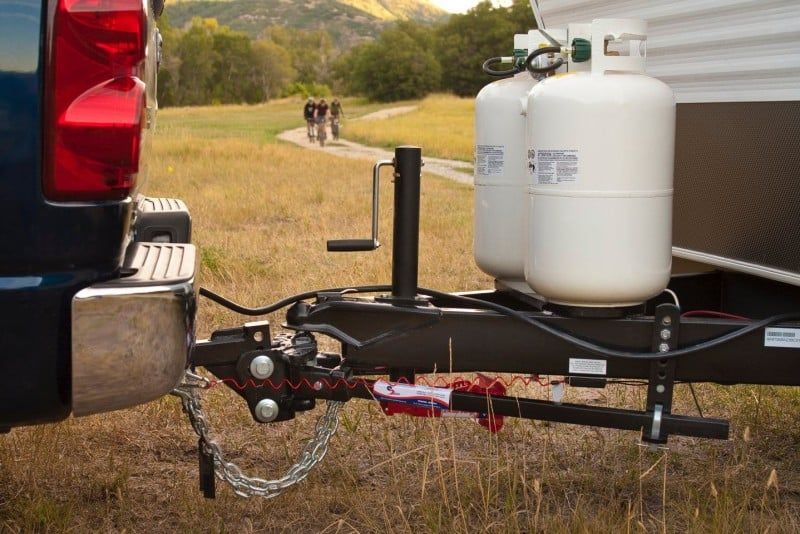 Each trailer will require a different amount of air pressure. This level is determined by trailer weight, size, axle rating, and trailer tire type.
Each trailer will require a different amount of air pressure. This level is determined by trailer weight, size, axle rating, and trailer tire type.
You should be cautious about using the PSI your friends or any YouTube personality claims to be the perfect tire pressure. That level they claim works for them may only work for them. Since your trailer is different from theirs, you may need a different PSI level for your trailer.
You can check the sticker that is supposed to be inside your trailer or the information listed in your owner’s manual. Those two items should give you the right PSI for your trailer and its weight. The side of the tire will also give you the maximum PSI level that you can fill the tires too.
The problem that comes in, is if you underinflate your tires, you could be asking for trouble. Under inflation is not your friend and depending on the trailer, etc., your tires should be inflated to somewhere between 40 and 65 PSI.
It is said that every tire manufacturer produces and publishes a tire pressure chart and includes tire load stats as well. However, this is not a simple chart to read for many people. You can try using it but there is a simpler way.
However, this is not a simple chart to read for many people. You can try using it but there is a simpler way.
On every trailer, there is supposed to be a federal certification tag on the trailer’s front left corner. On this tag is listed the trailer’s GVWR, GAWR, and the tire pressure information. That tire pressure information is calculated by the trailer’s weight.
It is an accurate calculation and it is only thrown off if you put an extra weight inside or on the trailer. When the trailer is not loaded with cargo and supplies, the tire pressure should be somewhere between what the tag says and what the maximum PSI is listed on the side of the tire.
However, you are not to exceed the maximum PSI listed on the side of the tire at any time. When replacing the tire, the maximum PSI should not be smaller than the PSI listed on that tag.
A quick search on the internet using this sub-section’s heading will result in a lot of tire calculators.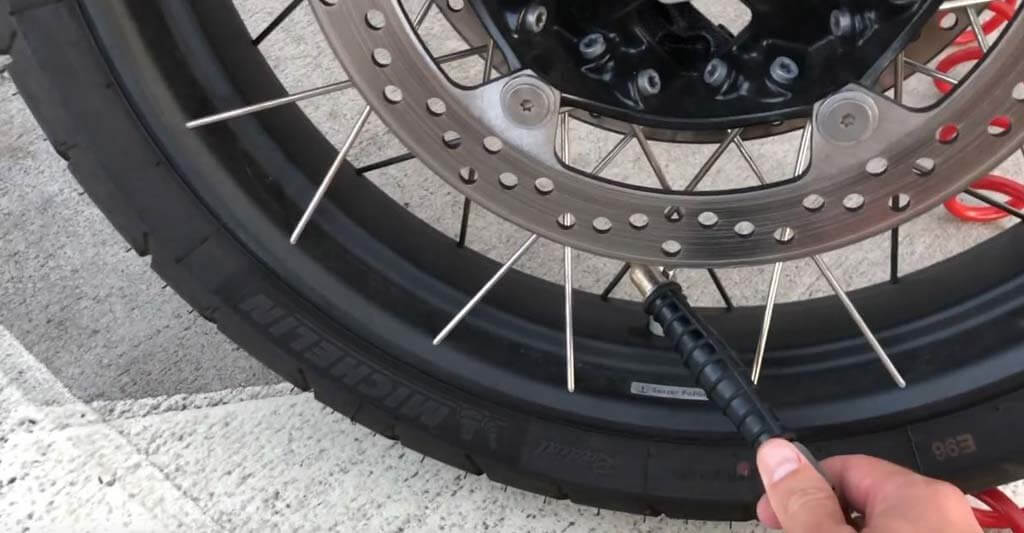 The problem is that these tire calculators may not work for trailer tires. The Firestone option was for agricultural machinery and not good for trailers.
The problem is that these tire calculators may not work for trailer tires. The Firestone option was for agricultural machinery and not good for trailers.
Others focused on cars and trucks and made no mention of trailer tires. There are some websites that are strictly for figuring out PSI for different trailer tires. One is more for European or Australian trailers and you can look at it here.
Another is a simple chart for North American trailer owners. You can take a look at it at this link. There is also a website that teaches you the equation you need to use if you do not want to use the calculators on the internet or you are not near a computer.
You can find his detailed explanation and equation at this link. Do your own search to see if you find some tire pressure calculators that you like better. The major tire makers should have some listings for trailer tires you can use.
You will find that the different tire makers will have tire charts for the tires they make for trailers and RVs.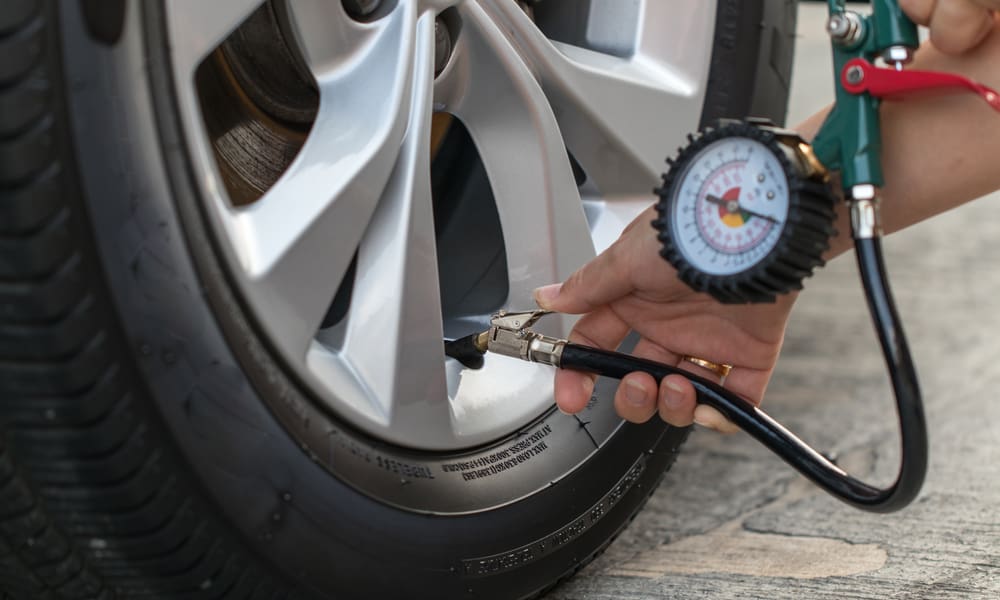 It is the same principle as the previous section and you can find these charts by using the sub-section’s title as your search words.
It is the same principle as the previous section and you can find these charts by using the sub-section’s title as your search words.
These charts classify the tires by wheel diameter and then make a table with the PSI listing as the main heading. They will also give you the load amount for each tire so you can get an accurate figure and know how much PSI you need to put inside your tires.
To look at Michelin’s tire chart for trailers and RVs, just click on this link. For Toyo Tires, just click on this link
. For your specific tire brand, you should look up the company’s website or use it in your search terms.
Every company may have different figures for your trailer tire PSI levels and it is best to check your brand of tire out on their website or contact them directly if you can’t find it.
Once you learn the difference, you will see how practical and sensible those words are. A cold tire has sat all night and has not been used yet for the day.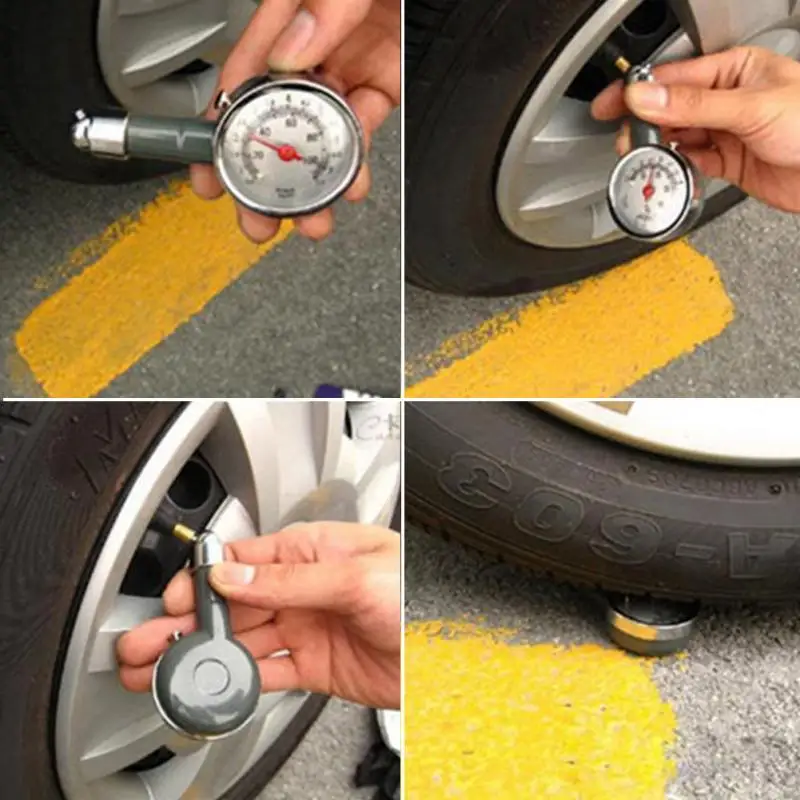 A hot tire has been used for some time throughout the day.
A hot tire has been used for some time throughout the day.
The latter describes the tire after it has been warmed up by use and the ambient temperature levels. A hot tire will show between 4 to 6 higher PSI than a cold tire will show. The rate is about 1 PSI pound per 10 degrees ambient temperature.
But the key is you cannot inflate your tires according to the hot levels. If you over or under inflate your tires you will cause some damage to the tires and make your journey a bit rougher than it should be.
No matter the conditions you are driving under, you cannot inflate your tires past the cold PSI maximum level listed on the side of the tires. If you violate that level you can overheat your tire and overheating is the leading cause of trailer tire failure.
The good news here is that the tire PSI does not change when the trailer is loaded or not. You may see a difference in the shape of the tire if you overload it but the PSI will not change just because the shape changes.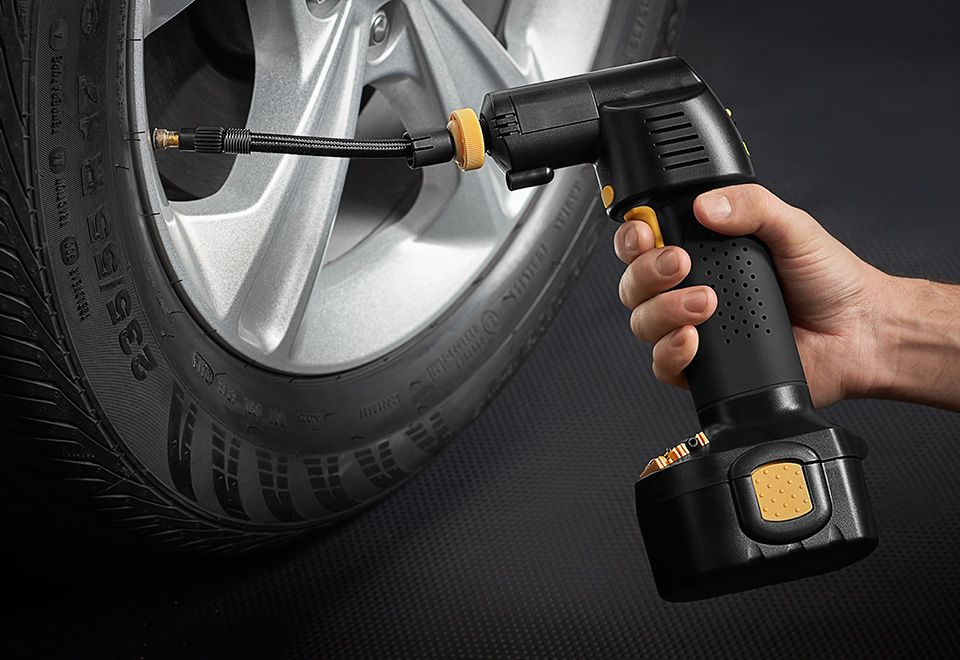
In what may be called extreme circumstances, you may see a 1 PSI change but that is not enough to damage your tires. The key is not to exceed the PSI level listed on the tire. That is the maximum amount of air you can place in your trailer tires.
The reason some people may lower the PSI in their tires is that their trailer is empty and they want to stop the bouncing that comes with properly inflated tires. Do not confuse the load range with the PSI level.
The former is for how much weight the tire can hold and the latter is telling you how much air you can put in the tire.
This is not going to change. Each tire, no matter the number of axles, will have a maximum amount of air it can hold. That maximum amount is listed on all the tires. You do not go over that PSI level even if you have 4 tires and two axles.
Of course, some people say that if you under inflate your tires when carrying a load, they will grip the road better.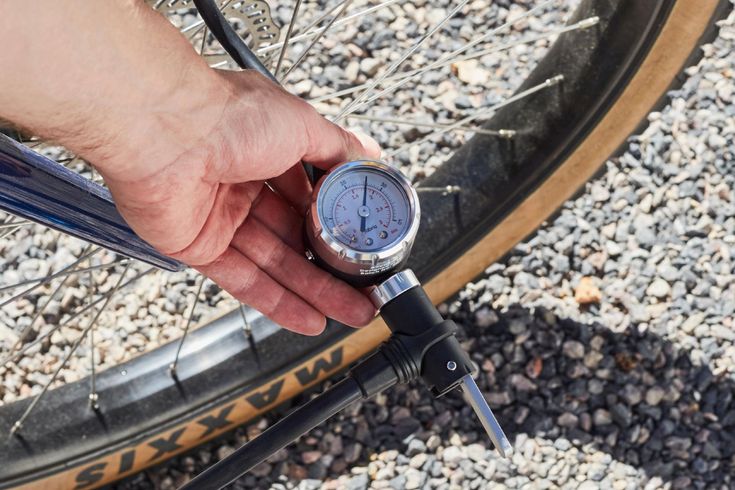 This is not the case. Under inflated tires may cause you tire trouble in different ways and make it more dangerous to drive. The same warning applies to over-inflated tires.
This is not the case. Under inflated tires may cause you tire trouble in different ways and make it more dangerous to drive. The same warning applies to over-inflated tires.
Just do not go over the PSI level listed on the tire and you should be fine. The weight held by each tire is not a factor in this issue and it is usually not known how much each tire is carrying. Stick to the PSI level on the side of the tire and you should ward off any problems even if you bounce more.
This is a simple step to take. If you take the time to check your tire pressure before you leave your home or camping spot, you can save yourself a lot of trouble. All you need to check your tire pressure is an accurate tire pressure gauge.
Take the covers off the valve and press the gauge down hard and firm onto the valve. The result spurt of air will push the needle or white gauge to the level of air pressure inside your tire. If you have a digital tire pressure gauge then you should get a clear read-out.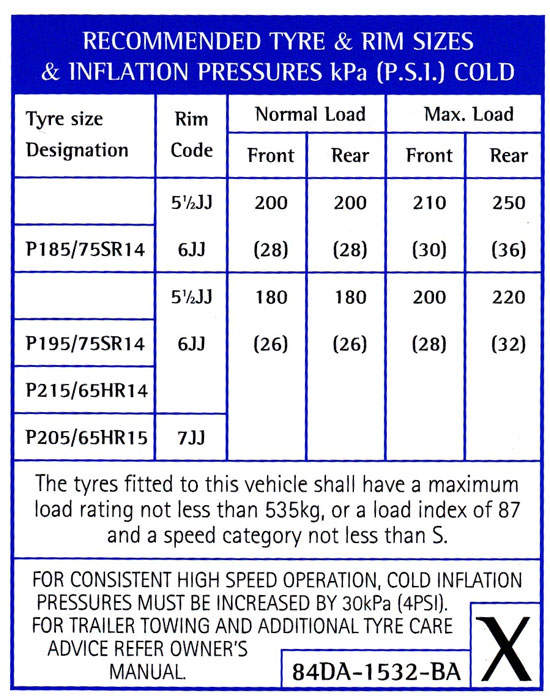
Then check your reading with the PSI level listed on the side of your tire. If the two do not agree, you may have to add more air or let a little bit out. However, take into account that warm tires will read higher than cold tires.
So you want to adjust for the different reading. It is best to check your tires when they are cold as the PSI level on the side of the tire is set for cold tires.
The answer is going to be the same for this type of trailer as it is for regular travel trailers. The maximum amount of air you should put in a boat trailer tire is listed on the side of the tire.
It doesn’t matter how heavy the boat is, that is the most air you can put in a boat trailer tire or any trailer tire. There is nothing scientific or special about tires no matter where they go. They can only hold so much air pressure and that is it.
Over inflate or under inflate those tires and you will face the same risks and dangers travel trailer and other trailer owners face.
This is the same answer as the previous section. Whatever is listed on the side of the tire will be the most air you can put inside the tire and have it perform up to its claims. At no time can you go over that listed PSI level even if you are hauling your crop in from the furthest field from your barn or silo.
The tires are made to hold only so much air and if you go over it, you will have some sort of trouble eventually. While tires are made to handle different loads, their PSI capacity does not change.
You have to look on the side of the tractor-trailer tires and see how much air pressure it can hold. This holds true for the semi-trailers you may be driving. The capacity does not change when the load weight changes. Read your tire to get the maximum PSI level no matter what.
The basic reason is that trailer tires have to hold more weight than a passenger tire has to hold.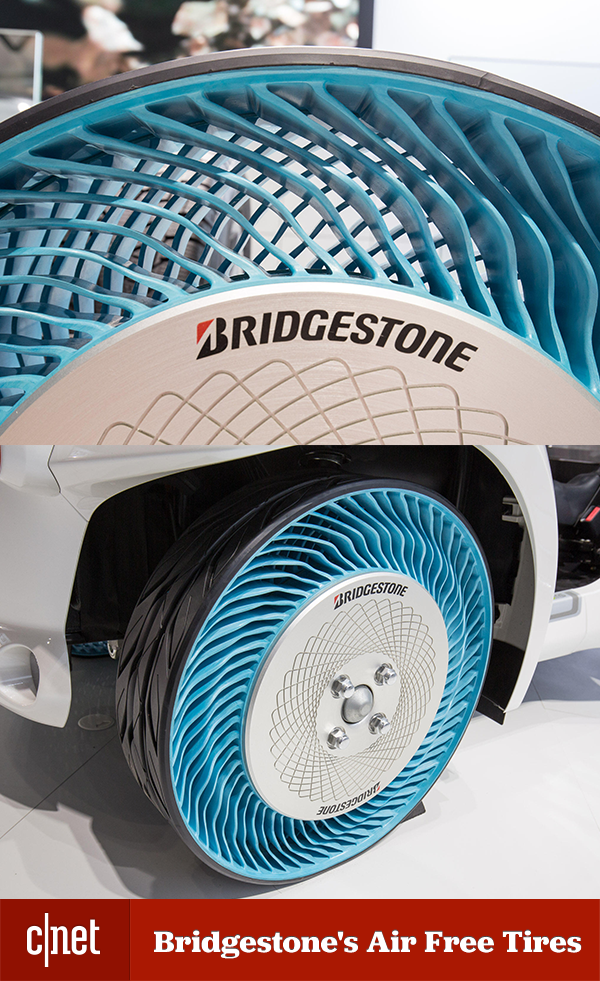 Sometimes, those trailers can weigh up to 15,000 pounds and they need a lot of air to hold that weight and move down the road
Sometimes, those trailers can weigh up to 15,000 pounds and they need a lot of air to hold that weight and move down the road
A passenger vehicle may only hold between 2000 and 8000 pounds, depending on if it is a small car, sedan, light truck, or SUV and carrying cargo. Also, the trailer tire is built with thicker sidewalls so they can hold more air with ease.
The lighter the trailer, the less PSI you will need in the tires. The maximum tire pressure is determined by the weight of the trailer so you may find that lighter trailer tires may not hold as much air as their heavier counterparts.
Yes, that is one of the many sources why trailers sway as you drive along the road. The tires are said to compress and decompress with each bump in the road. This reaction influences the trailer’s performance and you should start to see some sway taking place.
Low or under inflated tires give a lot more freedom of movement to the tires and that means you are losing control over your trailer. When you see your trailer swaying, take the next opportunity you can to check the tire pressure.
When you see your trailer swaying, take the next opportunity you can to check the tire pressure.
If they are inflated to the right level then you need to start looking at other sources for this problem. Those other sources would include too much weight, the weight is not distributed properly, you are experiencing wind gusts or you are driving too fast.
The maximum speed trailer tires are rated for is 65 mph and some are rated for lower speeds.
Having the right air pressure in your tires is very important. Too little or too much can result in damage to the tires, make them wear out faster, or an accident. No matter how much weight you are carrying, the PSI levels never change.
What it says is the maximum tire pressure for the tire, you cannot exceed that level no matter what. It doesn’t matter what anyone says either. Do not go above that PSI level.
(
Updated:
15/07/2021
)
Article content
What should be the tire pressure for a light trailer?
The safety of all road users and the life of the tires depend on the correct answer.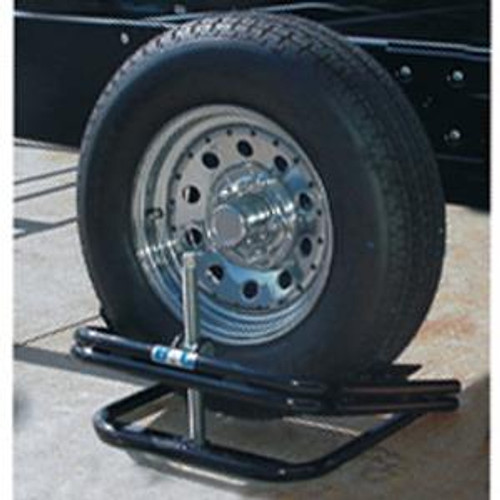 After all, pumped tires can burst on the go, causing an accident, and flat tires are erased around the edges in a couple of seasons. And if you have a passenger car (mini-tractor or walk-behind tractor), you should read this article and find out the control rules, as well as the permissible tire pressures for a single-axle or two-axle trailed construction.
After all, pumped tires can burst on the go, causing an accident, and flat tires are erased around the edges in a couple of seasons. And if you have a passenger car (mini-tractor or walk-behind tractor), you should read this article and find out the control rules, as well as the permissible tire pressures for a single-axle or two-axle trailed construction.
According to the generally accepted classification, a trailer structure for a passenger car (motoblock, mini-tractor) can be:
In addition, trailer structures can be universal or special. On universal models, you can carry anything. Special options are designed for a specific type of cargo, so they can be classified as:

Trailer tire pressure depends on load capacity and construction format. In addition, it is affected by the ambient temperature, the type of suspension, and the design features of the drawbar.
Remember, the recommended tire pressure for a heavy or light trailer tire is determined only by the manufacturer. Therefore, the permissible pressure values are displayed in the technical data sheet of the trailed structure. There are two numbers in this document: the pressure in the tires for single and dual placement on the axle.
In most cases, a car wheel is inflated to 2-2.1 atmospheres. Do the same with trailer tires. However, the pressure in the wheels of a walk-behind tractor trailer can be significantly less. For example, a cargo trailer for a car or motoblock model UAZ-8109 (Ishimmashzavod) allows only 1.1 atmospheres. The Skif-500 and Skif-700 models are designed for the same indicator.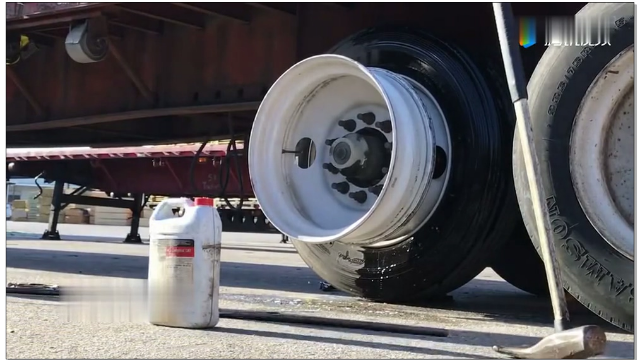
Boat trailer tire pressure does not fall below 2 atmospheres. However, the boat trailer model 81771A of the Moscow Special Vehicles Plant allows pressure up to 2.1-2.4 atmospheres.
Summer Drive Protection Sound Comfort
Rating:
4.5
Tires Goodyear Eagle F1 Asymmetric 3 SUV
Summer Drive protection
Rating:
4.5
Tires Goodyear Eagle Sport TZ
Summer Drive protection
Rating:
4.5
Tires Goodyear EfficientGrip 2 SUV
Summer Drive Protection Run On Flat
Rating:
4. 5
5
Tires Goodyear EfficientGrip Performance
Winter Drive protection
Tires Goodyear UltraGrip Arctic 2 SUV
Winter Drive Protection Sound Comfort
Rating:
4.5
Tires Goodyear UltraGrip Ice 2
Winter Drive Protection Sound Comfort
Rating:
4.5
Tires Goodyear UltraGrip Ice SUV
Winter Drive protection
Tires Goodyear UltraGrip Performance+ SUV
All season Drive Protection
Rating:
5
Tires Goodyear Vector 4Seasons Gen-3 SUV
Summer Drive Protection Run On Flat
Rating:
4
Tires Goodyear Wrangler HP All Weather
All season Drive Protection
Rating:
4.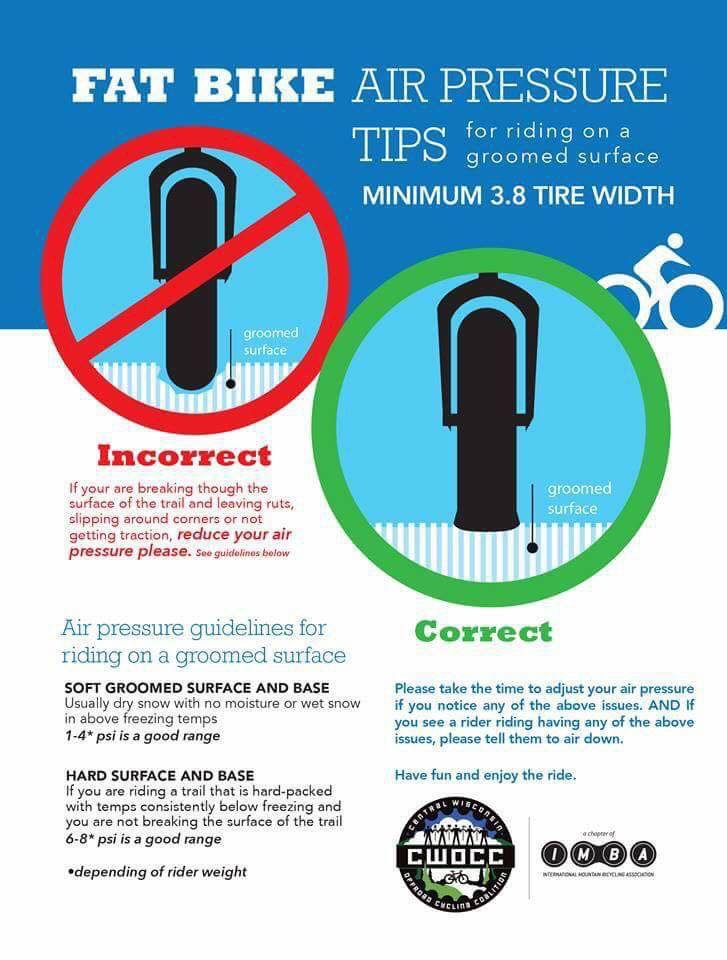 5
5
Tires Goodyear Vector 4Seasons
Summer
Rating:
4.5
Tires Goodyear Wrangler All-Terrain Adventure with Kevlar
Summer Drive Protection
Rating:
4.5
Tires Goodyear EfficientGrip SUV
Summer Drive Protection Run On Flat
Rating:
4
Tires Goodyear Eagle F1 Asymmetric SUV
Tire pressure can be checked at any workshop.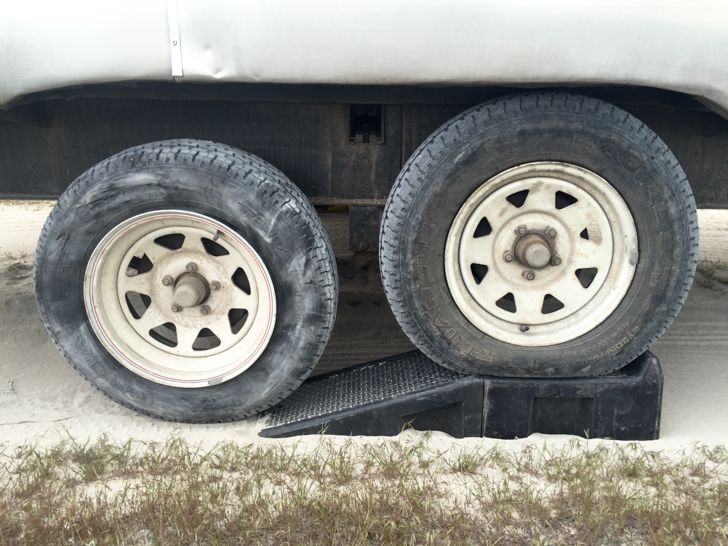 In addition, this can be done with a pressure gauge by connecting the device to the tire nipple. If you don’t want to check tire pressure for money or mess with a pressure gauge, buy a simple display system (caps with labels) or a full-fledged controller connected to a car computer via a wireless channel. Using these devices, you can control the amount of atmosphere in the tire at any time.
In addition, this can be done with a pressure gauge by connecting the device to the tire nipple. If you don’t want to check tire pressure for money or mess with a pressure gauge, buy a simple display system (caps with labels) or a full-fledged controller connected to a car computer via a wireless channel. Using these devices, you can control the amount of atmosphere in the tire at any time.
Why do this? First of all, to extend the life of the tread. If you overinflate a tire, the tread will wear off in the central part of the contact patch. If you carry loads on a flat tire, the tread will wear off along the edges of the contact patch. In any case, the wheel will last no more than three years (and not 4-5, as stated in the passport).
In addition, to prolong the life of the wheels, you need to think about the degree of appearance of the trailer structure and the speed of the hitch. If the operation of trailers for a walk-behind tractor does not allow a load of more than 500 kg and a speed of more than 80 km / h, do not try to carry a heavier load in the body.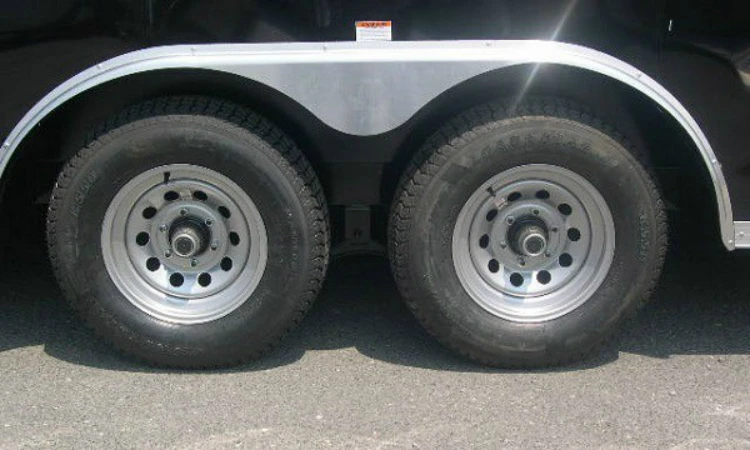 And under no circumstances accelerate above the speed limit. Otherwise, the structure will fall apart on the move or push the car into a ditch, using the force of inertia when passing a sharp turn.
And under no circumstances accelerate above the speed limit. Otherwise, the structure will fall apart on the move or push the car into a ditch, using the force of inertia when passing a sharp turn.
Find Goodyear tires for your vehicle
Tire pressure
Calculator works in test mode! Found an error in the indicators or want to leave suggestions, please send via the feedback form on the Feedback page or the VK group! Errors with evidence base (photos, screenshots, links) are accepted! All information presented on the site is for informational purposes only! Thanks for understanding!
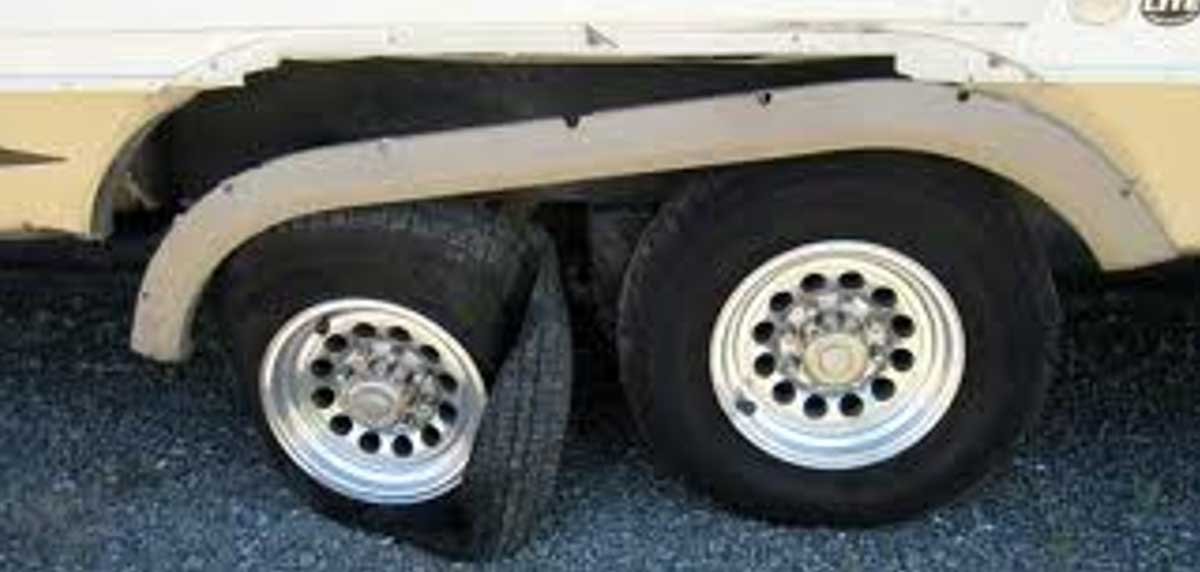 Checking regulations
Checking regulations A trailer is not an independent vehicle that does not have an engine, used to transport goods, being attached to a car.
The main classification of trailers for passenger cars is based on the maximum permitted weight - trailer weight with load: 9. This category is equipped with its own braking system.
A broader classification is the division by purpose:
- Bulk Cargo Dump Trucks
- Liquid Tankers
- Platforms carrying cars
- Trailers for transporting equipment (boats, motorcycles, snowmobiles, water scooters, etc.)
- Tourist accommodation modules on wheels
- Trailers for transporting animals
- Isothermal vans for the transport of dangerous goods
- Refrigerated trucks for perishable goods and substances
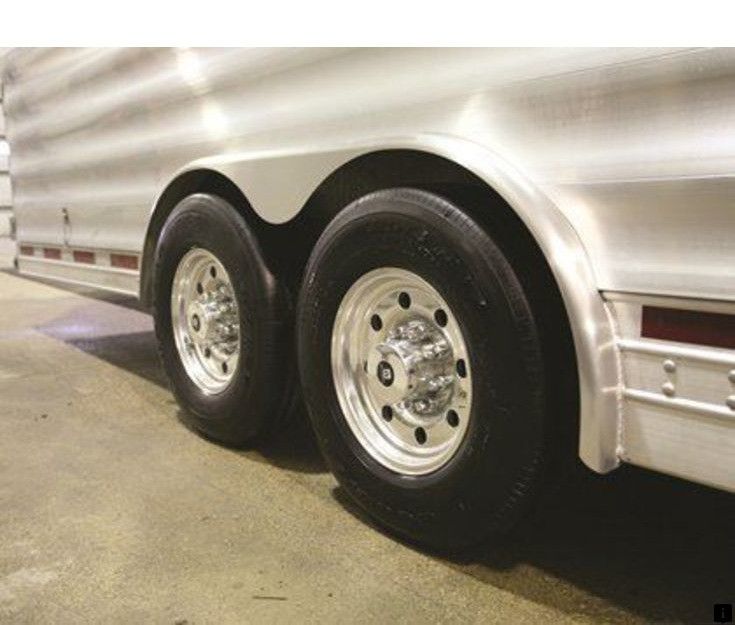 Inspection Regulation
Inspection Regulation
Insufficient inflation of tires leads to abrasion of the lateral parts of the tread, creases may appear on the rubber, spontaneous disassembly of the tire is possible.
Excessive pressure makes driving harder, the trailer bounces on bumps in the road, there is a danger of a wheel exploding. In addition, over-inflation wears out the central part of the tread faster.
On the vast majority of modern tires, the manufacturer indicates two main indicators that help you choose the right tire pressure:
Since the upper pressure limit is indicated for the case of the maximum permissible load on the wheel, it is recommended to take a value of 10% less as a working value.
When driving with a trailer without a load, the inflation is further reduced to avoid jumps on bumps in the road. Before loading, the tires are pumped up, the final control is carried out at the end of it.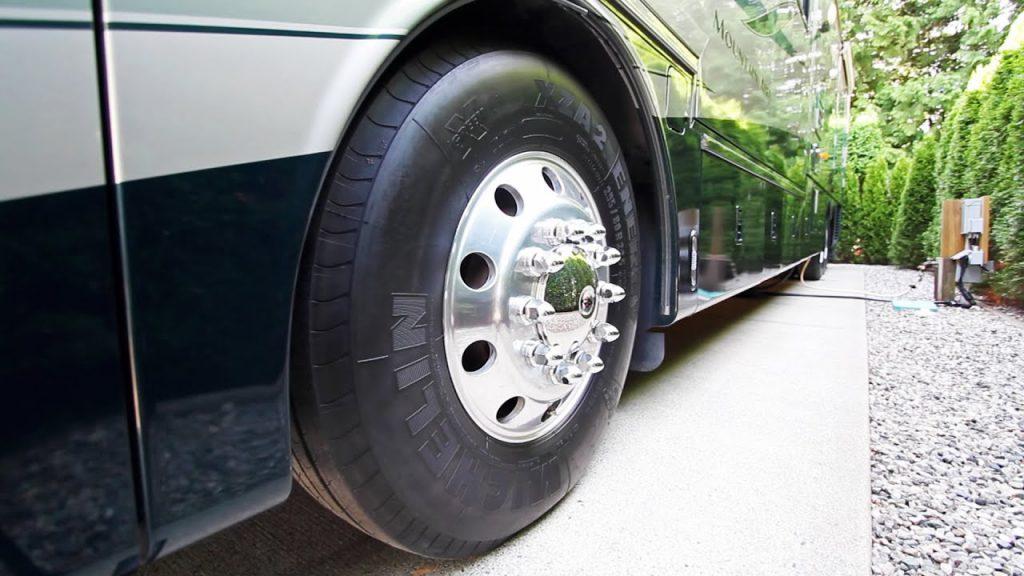
Important! The correctness and uniformity of tire inflation should be checked before each ride. If the cargo is to be transported, the pressure is re-measured after it is placed in the body.
During the hot season, it is recommended to additionally read the pressure gauge for the tires of the laden trailer on the road. The air in the tires expands when heated, the pressure increases, and this can lead to rupture of the rubber.
Pressure is measured with a special device - a manometer. Its main advantage is accuracy. Therefore, it is better not to save money, but to purchase a quality device. The use of pumps with built-in pressure gauges can give a noticeable error.
The main unit of measurement for tire pressure in Russia is Atmosphere (1 atm = 1 kgf/sq cm). Due to close values, it is conditionally equated to the Bar ( 1 bar.